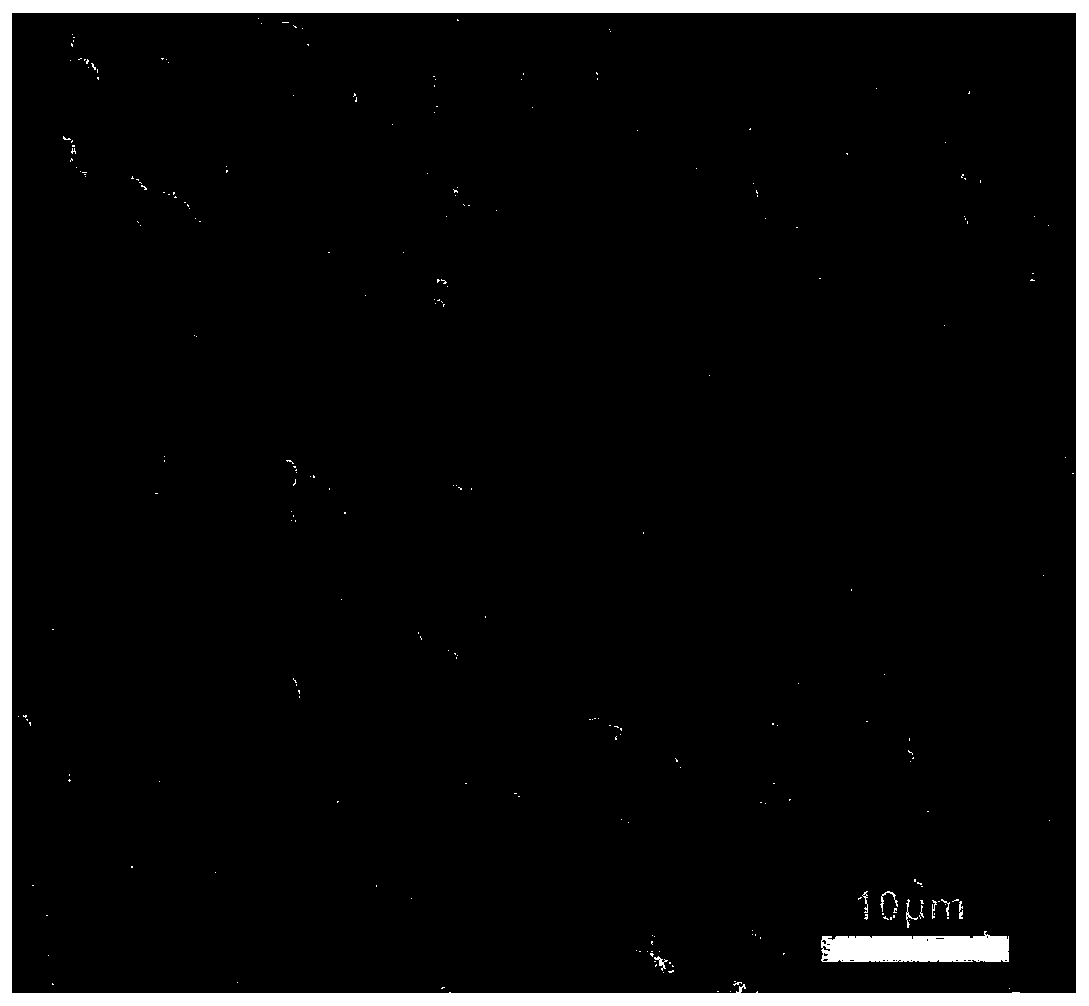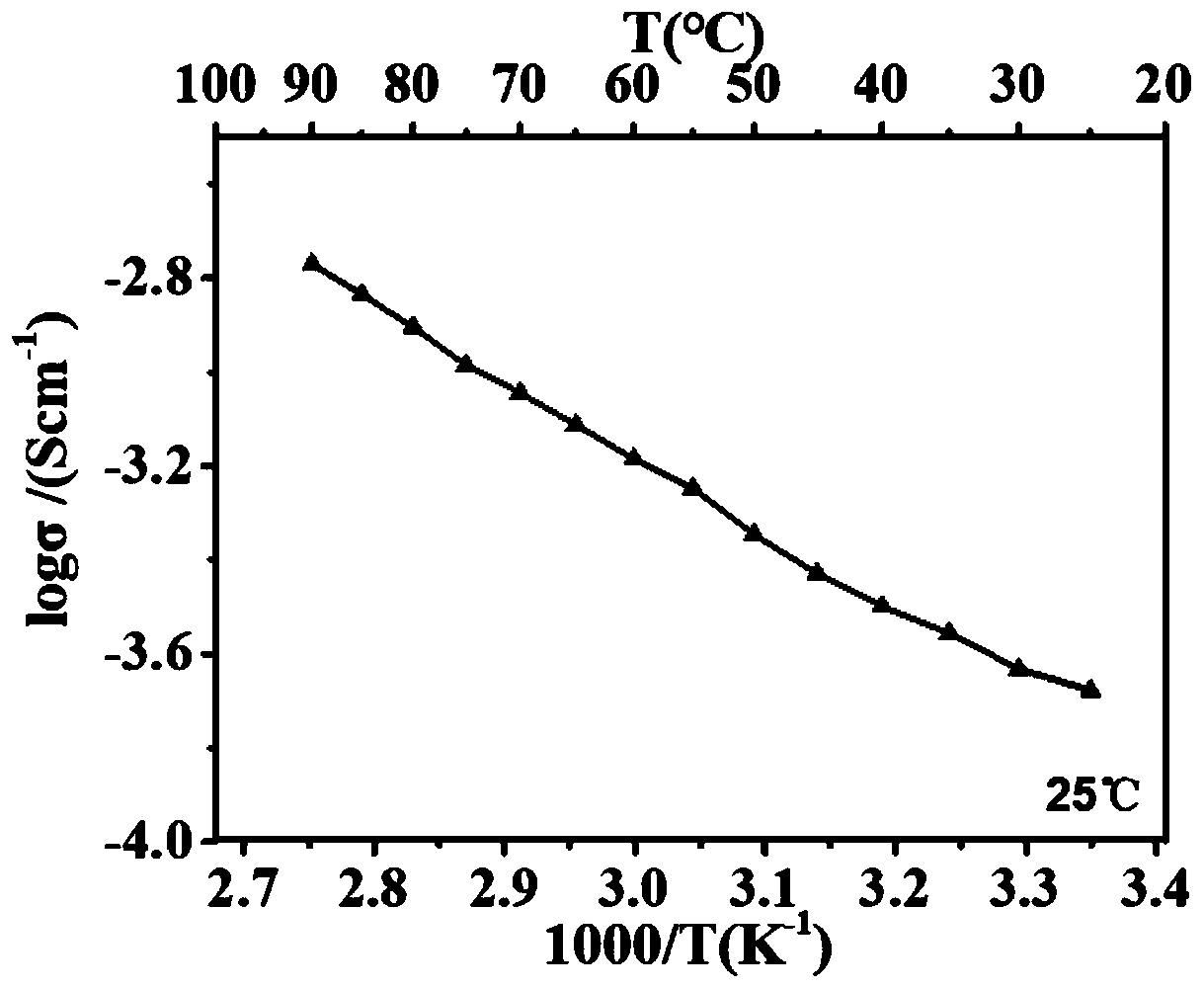Solid electrolyte and preparation method thereof, solid battery and electronic equipment
A solid electrolyte and electrolyte technology, applied in the field of lithium-ion batteries, can solve problems affecting battery energy density, reduce ionic conductivity, and mechanical strength lithium metal compatibility issues, and achieve excellent charge and discharge characteristics, good electrochemical stability, The effect of good cycle performance
- Summary
- Abstract
- Description
- Claims
- Application Information
AI Technical Summary
Problems solved by technology
Method used
Image
Examples
preparation example Construction
[0064] According to the second aspect of the present invention, the embodiment of the present invention proposes a method for preparing a flexible ceramic matrix composite solid electrolyte, including the following steps:
[0065] S1. Preparation of inorganic solid electrolyte ceramic matrix
[0066] Mix materials containing inorganic solid electrolyte and binder; grind for 1-4 hours; apply 0.1Mpa-10MPa pressure;
[0067] S2. Filling with organic additives and lithium salts with lithium-conducting ability
[0068] Mixing the organic additive with lithium conduction ability and lithium salt; preparing the mixture containing the organic additive with lithium conduction ability and lithium salt into a liquid mixture; immersing the inorganic solid electrolyte ceramic matrix obtained in step S1 into the liquid mixture.
[0069] The preparation of the mixture containing the organic additive with the ability to conduct lithium and the lithium salt into a liquid mixture is, for examp...
Embodiment 1
[0072] S1. Preparation of ceramic matrix
[0073] In an argon glove box, the binder polytetrafluoroethylene (PTFE) and the inorganic solid electrolyte Li 7 La 3 Zr 2 o 12 (LLZO) was thoroughly mixed at a mass ratio of 5:95, and ground for 1 hour to obtain a rough embryo of ceramic matrix film. The particle size range of the ground material was 0.1 μm-10 μm; The rough membrane is provided with a pressure of 3 MPa, and the pressure is maintained for 30 minutes to prepare a uniform ceramic matrix membrane.
[0074] S2. Filling with organic additives and lithium salts with lithium-conducting ability
[0075] Mix the organic additive succinonitrile (SN) with lithium-conducting ability and the lithium salt LiTFSI at a mass ratio of 4:1, then heat the mixture to 80°C and melt it into a liquid state to form a liquid mixture; immerse the ceramic substrate obtained in step S1 into the above-mentioned After 48 hours in the liquid mixture, take it out, let it stand to remove the resi...
Embodiment 2
[0079] S1. Preparation of ceramic matrix
[0080] In an argon glove box, the binder polytetrafluoroethylene (PTFE) and the inorganic solid electrolyte Li 10 GeP 2 S 12 After fully mixing at a mass ratio of 5:90, grind for 1 hour to obtain a rough ceramic matrix membrane. The particle size of the ground material ranges from 0.1 μm to 10 μm; Provide a pressure of 1 MPa and keep the pressure for 30 minutes to prepare a uniform ceramic matrix film.
[0081] S2. Filling with organic additives and lithium salts with lithium-conducting ability
[0082] The organic additive 1,2-diethyl-3-methylimidazolium trifluoromethanesulfonate (C 7 h 11 f 3 N 2 o 3 S) mix with lithium salt LiFSI at a mass ratio of 5:1, the organic additive dissolves LiFSI to form a solution; immerse the ceramic matrix obtained in step S1 in the above solution for 48 hours, take it out, and let it stand to remove the residue to obtain a flexible ceramic matrix composite solid electrolyte. Among them, PTFE...
PUM
| Property | Measurement | Unit |
|---|---|---|
| Thickness | aaaaa | aaaaa |
| Electrochemical window | aaaaa | aaaaa |
| Ionic conductivity | aaaaa | aaaaa |
Abstract
Description
Claims
Application Information
 Login to View More
Login to View More - Generate Ideas
- Intellectual Property
- Life Sciences
- Materials
- Tech Scout
- Unparalleled Data Quality
- Higher Quality Content
- 60% Fewer Hallucinations
Browse by: Latest US Patents, China's latest patents, Technical Efficacy Thesaurus, Application Domain, Technology Topic, Popular Technical Reports.
© 2025 PatSnap. All rights reserved.Legal|Privacy policy|Modern Slavery Act Transparency Statement|Sitemap|About US| Contact US: help@patsnap.com


